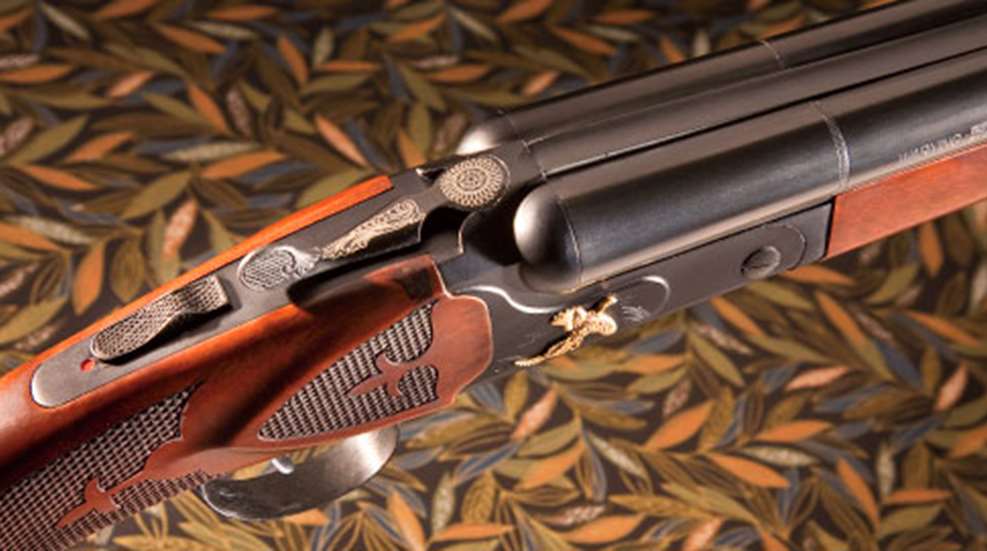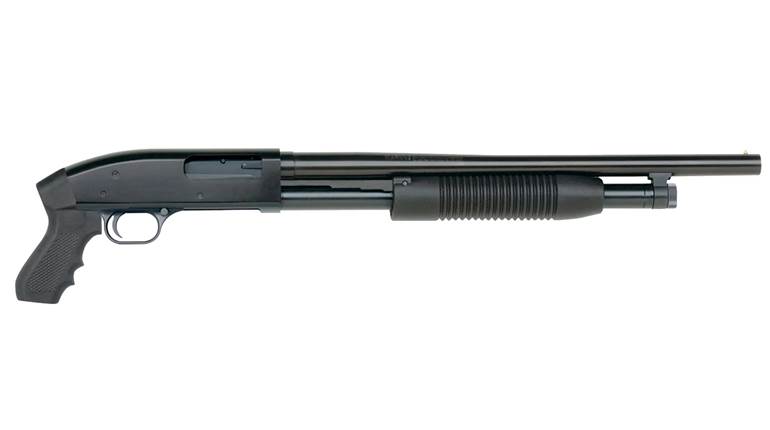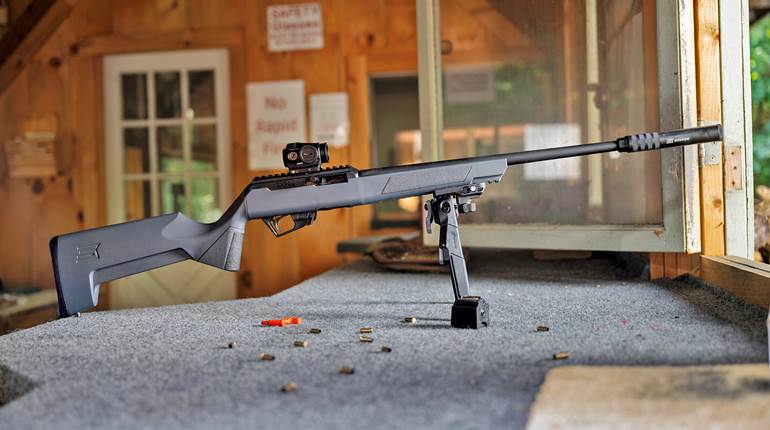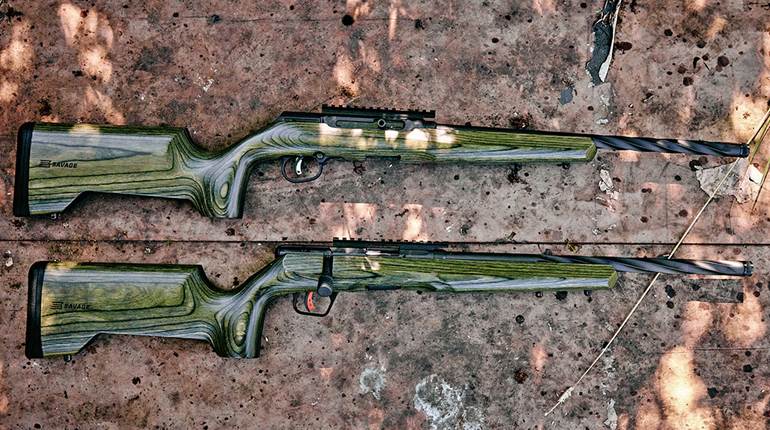
The J. Stevens Arms Co., founded in 1864, became the J. Stevens Arms & Tool Co. two years later, was acquired by New England Westinghouse in 1916 and then sold to Savage Arms Co. in 1920. Savage resurrected the name in recent years with the .22 Long Rifle single-shot Favorite and with more-affordable, no-frills variants of the company's flagship Model 110-based rifles. But Savage has also been importing shotguns under the Stevens name, and the latest is the Model 612 Gold Wing. Offered in 12, 20 and 28 gauge and .410 bore, they are built for Savage by the Hatfield Gun Co. in Torun, Turkey.
With its 612 series, Savage offers nice-looking, traditionally styled side-by-sides at affordable prices, and each gauge has a dedicated receiver. Unusually, the 6-pound, 12-ounce 612 reviewed here is a 20-gauge side-by-side boxlock with a dark black-matte 7075 aluminum receiver. Inset into the receiver is a 416 stainless steel breech face insert added to handle the pressures generated during firing. Quite a few over-unders have been made with aluminum receivers, but side-by-sides in that material are uncommon.
For economy's sake, the Model 612 is an extractor-only gun. The wide, single extractor moves rearward when the gun is opened. A lug on a fixed, stainless steel bar pushes the extractor's rod rearward as the barrels pivot downward on their steel hinge pin.
It is remarkably simple in design and operation. A single underlug, activated by the top lever, engages a recess under the barrels to lock the action. A sliding steel plate in the action's inside bottom moves rearward to cock the hammers when the gun is opened. The plate contains a lug that runs fore and aft, preventing side-to-side movement of the barrels when the action is closed.
Doubling as a barrel selector, the automatic top tang safety button is pressed forward to the "off" position. Pressing the button's top to the right reveals an "R" and selects the right barrel to fire first. The single-selective mechanical trigger is left in the white and employs an interrupter to prevent doubling. The pulls for both barrels were surprisingly crisp.
The 26-inch cold-blued barrels with top and bottom ribs are assembled on a monobloc, and then the hanger is soldered in place. A single brass bead adorns the front, and the gun is supplied with interchangeable choke tubes. The bores measured 0.634 inches for the right barrel and 0.630 inches for the left, making the 612 over-bored.
The stock and fore-end are of Turkish walnut with a medium luster finish. Our sample had plain figure, with some wide grain. The fore-end is a semi-beavertail with more surface area to hold onto than a splinter, but it is not as egregiously bulky as the full-blown beavertails that marked the Model 311, discontinued in 1989. Laser-cut bordered checkering with a fleur-de-lis pattern adorns both the wrist of the full pistol grip stock and the fore-end's underside. The butt is topped by a black spacer and a rubber recoil pad measuring 1/4 inch at its thinnest in the middle and 1/2-inch-thick at the heel and toe.
Fore-end attachment is via a Deeley & Edge latch, and a generous finger groove is on the inside front of the fore-end to aid removal. Externally, the finish is even and well-applied to all metal parts, although the rough finish on some of the internal components demonstrates the gun is designed to be affordable. Wood-to-metal fit was universally proud at the receiver/stock junction, but inconsistent at the fore-end latch.
The receiver measures 1.98-inches high at its tallest and is 1.92-inches wide across the chambers. False sideplates are cut in both sides of the receiver, and laser engraving appears on the top lever and the underside of the steel trigger guard. The relief, gold-tone rising ringneck pheasants depicted on both sides of the receiver appear to have had their necks wrung and tails distended in an ill-advised caricature of the game bird.
The 20-gauge 612 was patterned at 40 yards and function fired at American skeet and 5-stand sporting clays. There were no failures of any kind. The gun swung well despite its 26-inch barrels, as the lightness of the receiver made it balance more forward than similar guns with steel frames. For such a lightweight gun, it was fun to shoot and a delight to carry in the woods, which we did unsuccessfully for woodcock.
Its aluminum receiver makes the Model 612 Gold Wing unique, but the gun itself is just what it was intended to be: an unpretentious, American-style, light-weight side-by-side with solid handling at an extremely attractive price.
Manufacturer: Hatfield Gun Co., Torun, Turkey
Importer: Savage Arms; (800) 370-0708; www.savagearms.com
Gauge: 12, 3"; 20, 3" (tested); 28; .410 bore
Action Type: side-by-side, break-action shotgun
Receiver: black anodized 7075 aluminum with 416 stainless insert
Barrel: 26" cold-blued
Chokes: interchangeable
Trigger Pull: single-selective, mechanical: 4 lbs., 4 ozs. right barrel; 4 lbs., 3 ozs. left barrel
Stock: Turkish walnut: length of pull, 143⁄8"; drop at heel, 27⁄8"; drop at comb, 21⁄8"
Overall Length: 431⁄8"
Weight:6 lbs.,12 ozs.
Accessories: five interchangeable choke tubes (full, modified, improved modified, improved cylinder and skeet), choke tube wrench
Suggested Retail Price: $799





































